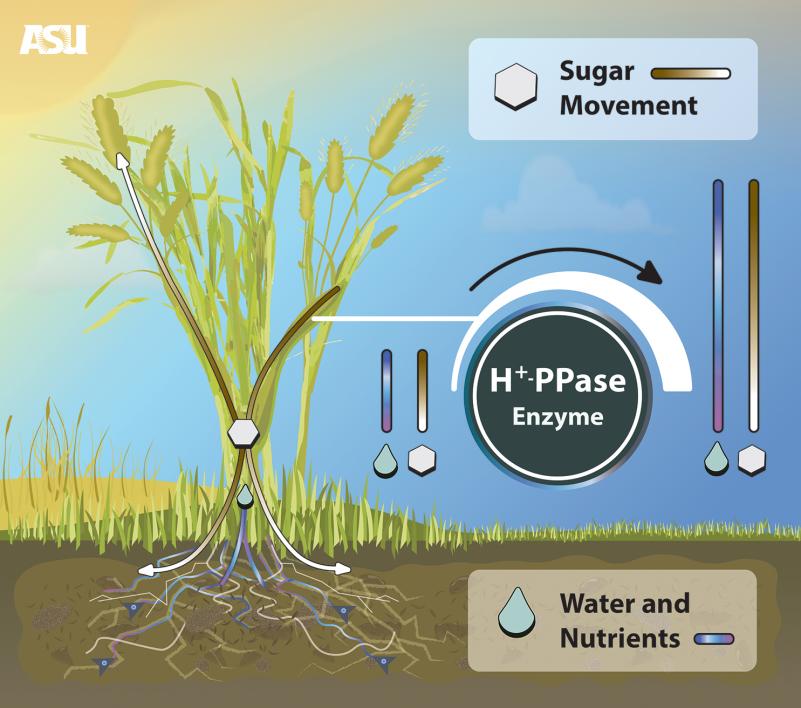An Arizona State University researcher has figured out a way to modify crops that causes them to use less water and fertilizer but grow more food, an exciting development as food security becomes a critical concern as the world’s population expands.
Roberto Gaxiola, an associate professor with the School of Life SciencesThe School of Life Sciences is an academic unit in the College of Liberal Arts and Sciences., said his work also enhances a plant’s tolerance to various outside stresses, such as drought or climate change, other factors in feeding the more than seven billion people on the planet.
Gaxiola describes the work as enhancing the way a certain gene in the plant operates.
“This gene helps to move photosynthates — or molecules made by photosynthesis in the leaves — to the places plants need them in order to grow better roots, fruits, young leaves and seeds,” he said.
Current agricultural methods to increase the production of food often overuse fertilizer, causing environmental problems by polluting water and creating dead zones in oceans downstream. Over-fertilization can also cause plants to have small roots — something that was not anticipated when fertilizers were developed in the early 1900s.
By increasing the expression of the enzyme H+-PPase, plants can more effectively move sugar, water and nutrients to the places they need them to grow better roots, fruits, seeds and young leaves. Credit: David Kiersh, ASU
By changing how effectively a plant uses water and nutrients, farmers would be able to use fewer resources to grow their crops.
“Larger roots allow plants to more efficiently acquire both nutrients and water,” said Gaxiola. “We can optimize inputs while minimizing environmental impacts. This is advantageous for our environment and for all consumers.”
The study showed that altering the way this geneThe gene, which is called type 1 H+-PPase, is found naturally in all plants. works in rice, corn, barley, wheat, tomato, lettuce, cotton and finger millet caused better growth in roots and shoots, and also improved how the plants absorbed nutrients.
The crops also saw improved water use and tolerance to salt in the soil, which is bad for crops.
The study’s findings were published in the scientific journal Trends in Biotechnology.
Gaxiola, who is the lead author of the study, collaborated with researchers from the University of Arizona, University of North Texas and with the USDA/ARS Children's Nutrition Research Center, Baylor College of Medicine.
He said the next step is to further study this simple biotechnology in order to maximize its agricultural potential.
This study was funded by the National Science Foundation (IOS-1122148).
Top photo by Thomas Westcott, Freeimages.com
More Science and technology

4 ASU researchers named senior members of the National Academy of Inventors
The National Academy of Inventors recently named four Arizona State University researchers as senior members to the prestigious organization.Professor Qiang Chen and associate professors Matthew…

Transforming Arizona’s highways for a smoother drive
Imagine you’re driving down a smooth stretch of road. Your tires have firm traction. There are no potholes you need to swerve to avoid. Your suspension feels responsive. You’re relaxed and focused on…

The Sun Devil who revolutionized kitty litter
If you have a cat, there’s a good chance you’re benefiting from the work of an Arizona State University alumna. In honor of Women's History Month, we're sharing her story.A pioneering chemist…



